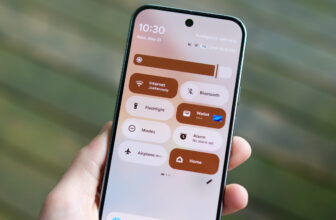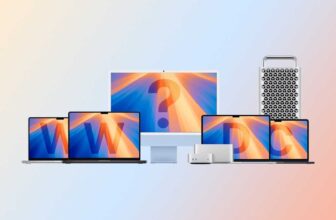
In addition to announcing two ‘Pro’ iPhone 16 models, Apple also announced the vanilla models. In this article, we’ll compare those two devices, the Apple iPhone 16 vs Apple iPhone 16 Plus. Much like the two ‘Pro’ models, these two devices are also similar in direct comparison. They are different in terms of size, quite a lot. The same goes for the sizes of their displays, and battery capacities, due to the overall size difference.
Other than that, these two smartphones are basically the same. They’re supposed to offer the same experience but in a different size to users. We will first list their specifiations, and will then move to compare them across other categories. We’ll compare their designs, displays, performance, battery life, cameras, and audio output. Do note that, at the time of writing this comparison, we still did not review the two devices. This is based on initial impressions and general information about the two phones.
Specs
Apple iPhone 16 vs Apple iPhone 16 Plus, respectively
– Screen size:
6.1-inch Super Retina XDR OLED ( flat, 60Hz, HDR, 2,000 nits)
6.7-inch Super Retina XDR OLED ( flat, 60Hz, HDR, 2,000 nits)
– Display resolution:
2556 x 1179
2796 x 1290
– SoC:
Apple A18 (3nm)
– RAM:
8GB
– Storage:
128GB/256GB/512GB (NVMe)
– Rear cameras:
48MP (wide, f/1.6 aperture, 1/1.56-inch sensor, 1.0um pixel size, sensor-shift OIS), 12MP (ultrawide, f/2.2 aperture, 120-degree FoV, 0.7um pixel size, PDAF)
– Front cameras:
12MP (f/1.9 aperture, PDAF, 1/3.6-inch sensor size,)
– Battery:
Not confirmed yet
– Charging:
Wired, wireless & reverse wired charging
Speeds not confirmed yet
– Dimensions:
147.6 x 71.6 x 7.8 mm
160.9 x 77.8 x 7.8 mm
– Weight:
170 grams
199 grams
– Connectivity:
5G, LTE, NFC, Wi-Fi, USB Type-C, Bluetooth 5.3
– Security:
Face ID (3D facial scanning)
– OS:
iOS 18
– Price:
$799+
$899+
– Buy:
Apple iPhone 16
iPhone 16 Plus
Apple iPhone 16 vs Apple iPhone 16 Plus: Design
These two smartphones look the same but come in different sizes. They’re both made out of aluminum and glass. You’ll find flat displays here, with rather thin bezels around them. Those bezels are thicker than the ones on the ‘Pro’ models, though. There is a pill-shaped cutout at the top of the display, the so-called ‘Dynamic Island’. The sides on both smartphones are flat, though they curve slightly towards the edges.
On the right-hand side of both phones, you’ll find a power/lock key, and the ‘Camera Control’ button. On the left, the volume up and down buttons sit, along with the ‘Action Button’. Two cameras are placed on the back of both devices. Those cameras are vertically aligned, and they sit in the top-left corner on the back. Apple changed up the layout of the two cameras on the back compared to the iPhone 15 and iPhone 15 Plus.
Apple’s logo is placed in the middle of the back side of the two devices. The iPhone 15 Plus is considerably taller and wider, while it’s also 29 grams heavier than the iPhone 15. The two phones are the same in terms of thickness, though. You’re also getting an IP68 certification on both of these smartphones. Do note that both of them are very slippery, so getting a case may be a good idea.
Apple iPhone 16 vs Apple iPhone 16 Plus: Display
The iPhone 16 features a 6.1-inch 2556 x 1179 Super Retina XDR OLED display. That panel is flat, an dit supports HDR10 content. Dolby Vision is also supported, and the peak brightness here is 2,000 nits. The screen-to-body ratio is at around 86%, while the display aspect ratio is 19.5:9. The Ceramic Shield glass protects the iPhone 16’s display, a new version of it, that is.

The Apple iPhone 16 Plus, on the flip side, includes a 6.7-inch 2796 x 1290 Super Retina XDR OLED display. That display is flat, and it supports HDR10 content and Dolby Vision. Its peak brightness is also set at 2,000 nits. It’s basically the same panel as on the smaller model, but larger. The screen-to-body ratio is 88%, while the display aspect ratio is 19.5:9. The Ceramic Shield glass protects this display too.
There is absolutely no difference between these two panels. They’re exactly the same, they’re only different in terms of size, that’s it. Both displays look good, they’re quite vivid and have good viewing angles. The touch response is good, but you’re not getting anything fancy here, like gaming-level fancy. Both displays do get quite bright, but not to the level of some competition in the Android world. Still, bright enough to use outdoors without problems. Also, do note that both of these displays are 60Hz panels, so you’re not getting a high refresh rate here.
Apple iPhone 16 vs Apple iPhone 16 Plus: Performance
The Apple A18 fuels both of these smartphones, that’s Apple’s new 3nm processor. It comes with a 5-core graphics card. So there’s one less GPU core here than on the ‘Pro’ variant of this processor. Both smartphones include 8GB of RAM and come in three storage options, 128GB, 256GB, and 512GB variants. Apple is using NVMe storage here, and it’s not expandable, in case you were wondering.
The initial impressions with both smartphones are really good. They’re very snappy in regular use, as you’d expect from iPhones. The experience is basically the same as was last year, as far as we can tell. The animations are great, and bogging down either phone during regular use is not an easy task, that’s for sure. This chip that Apple uses is immensely powerful, so no worries there. Chances are that both devices will remain functioning at this level for quite some time.
What about gaming? Well, we haven’t really tested the two phones in that regard yet, so… we cannot really say much. However, Apple did improve thermals here, as the iPhone 16 is now using a Graphene Sheet to improve thermals. On top of that, these two phones are made out of aluminum, which helps with heat dissipation too (compared to titanium). Heating should not be a problem.
Apple iPhone 16 vs Apple iPhone 16 Plus: Battery
Apple did not announce battery capacities in either of these two smartphones. They are rumored to be using 3,561mAh and 4,006mAh battery packs, respectively. We cannot really talk about the battery life just yet, but if there is any truth to these battery capacities, the iPhone 16 should offer battery life than its predecessor. The iPhone 16 Plus seemingly has a notably smaller battery, but the battery life should not be much worse in comparison. We’ll have to wait and see.
The iPhone 15 Plus did offer outstanding battery life, so even if the iPhone 16 Plus’ battery life does take a hit, that shouldn’t be a problem. The iPhone 16 is, however, expected to offer more in that regard, which is nice to see. Once again, these battery capacities are not confirmed as of yet, so take this information with a grain of salt.
Something else that Apple hasn’t confirmed just yet is the charging speeds on the two phones. That goes for the ‘Pro’ models as well. The iPhone 15 and iPhone 15 Plus offered 20W wired, 15W wireless (MagSafe and Qi2), 7.5W Qi wireless, and 4.5W reverse wired charging. We do suspect that both wireless and reverse wired charging is the same on the new models. There could be a change in the wired section, however. Why? Well, China’s Quality Certification Center (CQC) revealed that all four iPhone 16 models peak at 45W charging.
Apple iPhone 16 vs Apple iPhone 16 Plus: Cameras
These two smartphones have the exact same camera setups. There is a 48-megapixel main camera (f/1.6 aperture lens, 1/1.56-inch camera sensor, dual pixel PDAF, sensor-shift OIS) here. A 12-megapixel ultrawide unit (f/2.2 aperture, 120-degree FoV, 0.7um pixel size, dual pixel PDAF) also sits on the back. On the front, you’ll find a 12-megapixel camera (f/1.9 aperture, 23mm lens).

The main camera remains completely unchanged compared to last year’s models. The ultrawide camera did get a small bump, however. The results from the main camera are expected to be a bit better due to Apple’s improved processing, etc., but not by much. Checking out the ultrawide camera performance should be interesting, however. It should be better, especially in low light.
Audio
Last year’s models did offer good stereo speaker performance, but nothing to write home about. Based on some initial impressions, the same goes for the iPhone 16 and iPhone 16 Plus. Not many people will complain, though.
No, there is no audio jack on either of these two smartphones. You can, however, make use of their Type-C ports for audio purposes. You’ll need a dongle if you don’t have Type-C headphones, but once you get one, you’re good to go. Alternatively, Bluetooth 5.3 is an option for wireless audio.




